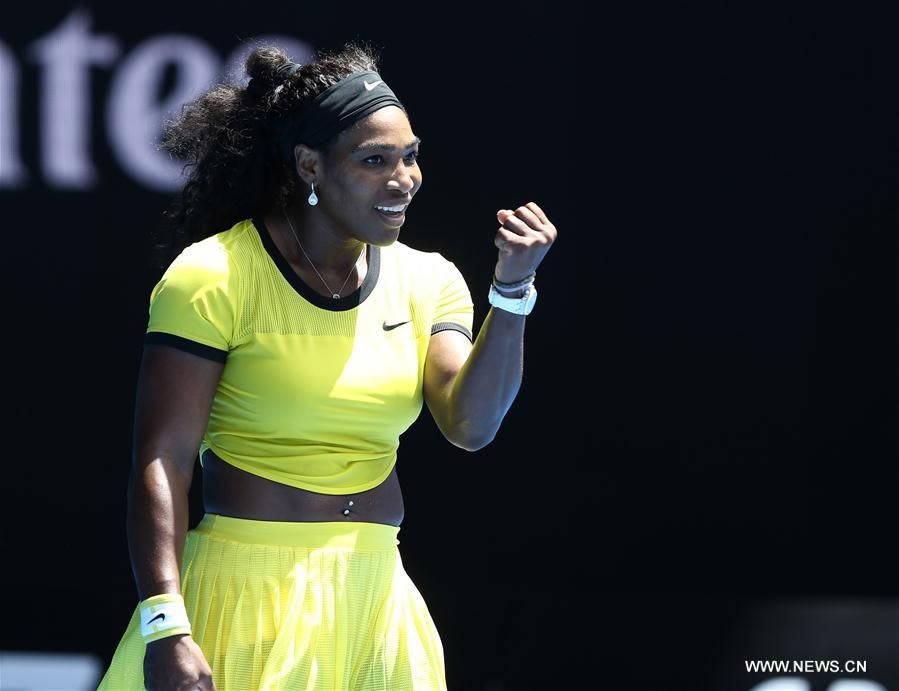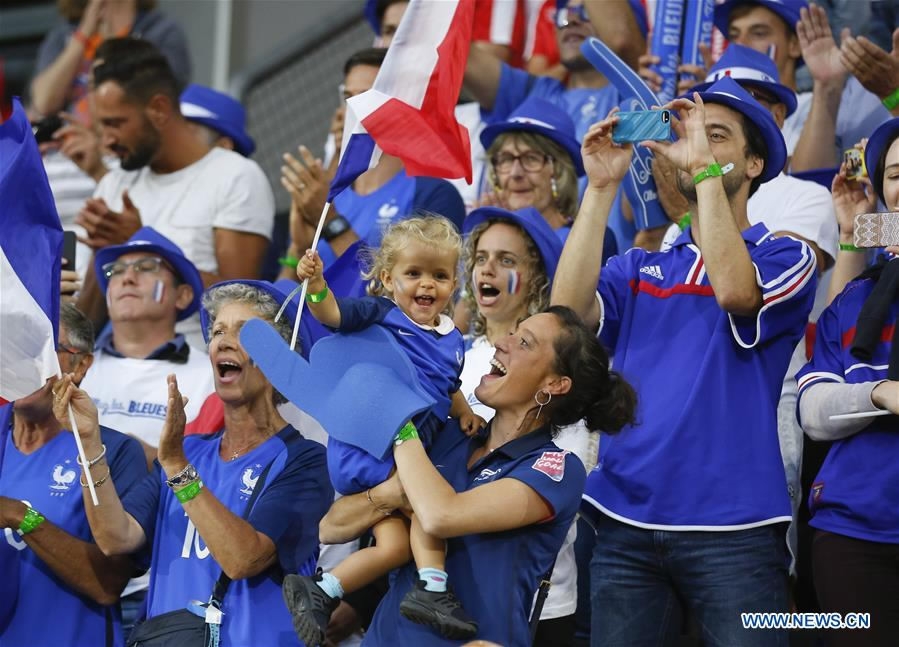The women's European football championship is currently underway in the Netherlands but you wouldn't know it.
Unlike the men's Euro 2016, which featured stars like Cristiano Ronaldo and Gareth Bale and galvanized half the continent for a month, the women's event has garnered relatively little attention. Many games haven't sold out although they have been played in smaller stadiums.
And it's not just football. Usain Bolt, Roger Federer, Michael Phelps, Tiger Woods or Lewis Hamilton -- most international sports stars are men. And their bank accounts have notoriously reflected their success, dwarfing any pay or prize money that many of their female counterparts get.
So why do women's sports get less attention than men's? Is that true for all disciplines? And what can be done about it?

Serena Williams reacts during the Australian Open Tennis Championships in Melbourne, Australia, Jan. 24, 2016. /Xinhua Photo
Serena Williams reacts during the Australian Open Tennis Championships in Melbourne, Australia, Jan. 24, 2016. /Xinhua Photo
Not taken seriously
"It’s very very recent that anyone has taken women’s sports very seriously,” notes Carole Oglesby, co-chair of the International Working Group on Women and Sport and a long-time advocate of women's sports.
The US women's soccer team is arguably more popular than the men's after winning four Olympic gold medals and three World Cups. Tennis players like Serena and Venus Williams are right up there with their male counterparts in terms of name recognition. And in gymnastics or figure skating, women often get more viewers than the men.
But the world's most watched sports -- football, F1, rugby, golf -- are still very much male-dominated, as almost any sports page or website will show.
The 'weaker' sex?
Part of this has to do with the fact that many sports opened up to women much later than to men. Sporting prowess is another oft-cited argument: female sprinters have yet to run 100m in under 10 seconds, a record broken by men almost 50 years ago.

Pernille Harder of Denmark vies for the ball with Linda Dallmann of Germany during the UEFA Women's EURO 2017 quarter-final match at Sparta Stadium in Rotterdam, the Netherlands, July 30, 2017. /Xinhua Photo
Pernille Harder of Denmark vies for the ball with Linda Dallmann of Germany during the UEFA Women's EURO 2017 quarter-final match at Sparta Stadium in Rotterdam, the Netherlands, July 30, 2017. /Xinhua Photo
Still, “there are gender issues, and misogyny and patriarchal thinking that no matter what women do, they’re never going to be as good at sports as men,” Oglesby told CGTN.
Fans enjoy intense rivalries and aggressive behavior on the court or on the pitch -- qualities more often associated with men's than women's sports.
But female athletes have a lot more to offer, Oglesby insists.
“Ticket sellers do not understand the women’s game... they just take the pattern that’s already there for men’s sports and shove it onto the women’s game.”
The pay chasm
A recent BBC report found that in 83 percent of sports -- including athletics, cycling, swimming, table tennis, volleyball and many winter sports -- male and female athletes received equal prize money at the same level.

Players of the Netherlands celebrate during the UEFA Women's EURO 2017 soccer tournament against Belgium at the Willem II Stadium in Tilburg, the Netherlands, July 24, 2017. /Xinhua Photo
Players of the Netherlands celebrate during the UEFA Women's EURO 2017 soccer tournament against Belgium at the Willem II Stadium in Tilburg, the Netherlands, July 24, 2017. /Xinhua Photo
But the figure did not include high-profile sports like basketball, rugby, ice hockey and wrestling -- whose federations did not respond to the survey. And the most lucrative sports -- cricket, darts, football and golf -- still saw men out-earning women.
The most extreme example is football where in 2015, the US women received two million US dollars for winning the World Cup, while a year earlier the German men scooped up 35 million dollars. This season's English Premier League champions Chelsea got a 50-million-dollar check, while the Women’s Super League winners got zero cash.
Among the world’s most popular sports, only tennis awards equal prize money to men and women in all tournaments, including Grand Slams.
On Forbes’s 2017 list of 100 highest paid athletes, Serena Williams was the only woman, coming in 51st place after golfers, F1 drivers and basketball, baseball and American football players.
Filling seats
For Bernd Frick, a sports economist at the University of Paderborn in Germany, it’s a simple matter of economics: athletes' pay is tied to revenue, advertising and sponsors, and that depends on the number of viewers and fan base they can foster.

French fans cheer during the UEFA Women's EURO 2017 Group C match between France and Switzerland in Breda, Netherlands, July 26, 2017. /Xinhua Photo
French fans cheer during the UEFA Women's EURO 2017 Group C match between France and Switzerland in Breda, Netherlands, July 26, 2017. /Xinhua Photo
"Fans are willing to pay more money to watch men playing golf than to watch women playing golf, for whatever reason," he told CGTN. "It’s a question of the size of the relevant market: when the market is large, people earn more and when the market is small they earn less."
"It might not be fair but markets are never fair,” he added.
"In a sport like football or golf, that money mostly comes from sponsors and if a sponsor does not expect an adequate return for his investment he will simply stop investing."
Frick noted however that top-level women's football tournaments have only existed for about 20 years. "Give them another 20 years and the difference (in pay) will be much much smaller,” he said.
For Oglesby, there needs to be a better understanding of women's sports -- so that people "are able to appreciate what they’re seeing when they see the women’s game” -- and a bigger spotlight on these athletes.
"Put it on television, get people in the stands,” she urged.
She warned however it “could be a long time” before female athletes accede to the same heights as their male colleagues in all sports.







